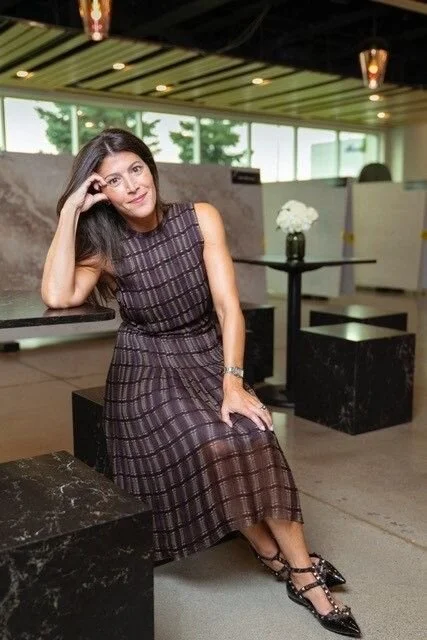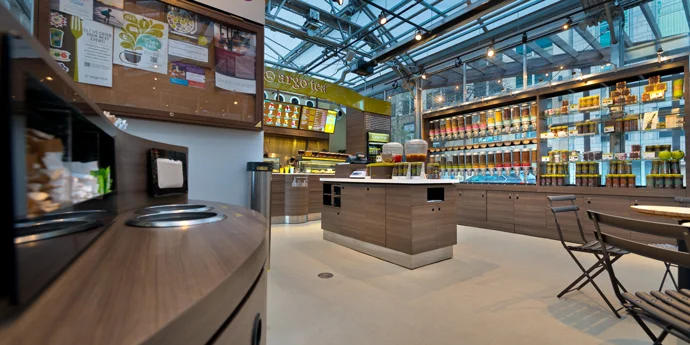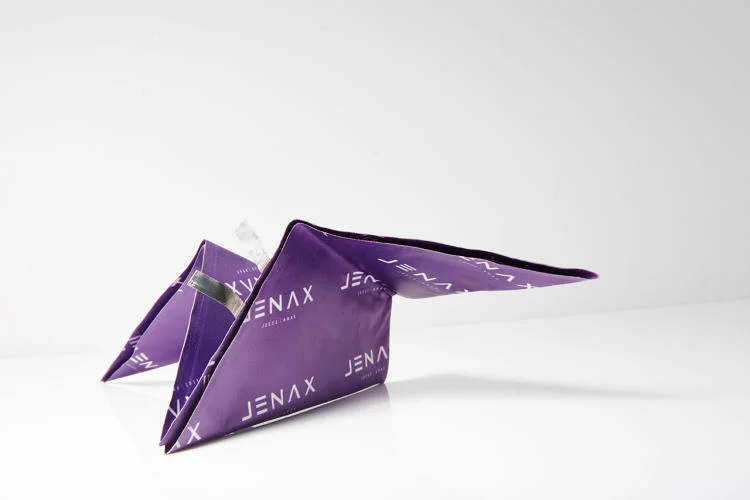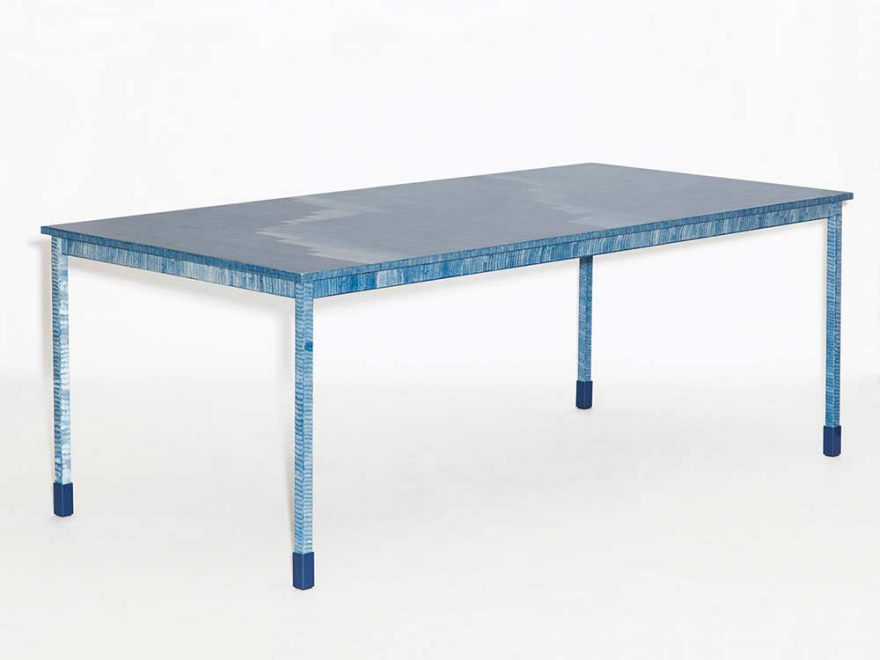Architecture is an endless source of inspiration for textile designer Suzanne Tick, and she has brought that sensibility to a number of her projects, be they flooring for Tarkett or upholstery for Luum Textiles. “I go by every building skeleton and take a picture, and think, ‘That’s going to be the next weave structure,’” she says.
This 3D-Knit Chair Is Made From A Single Piece Of Technical Fabric
3D knitting isn’t just for clothes or shoes; it’s potentially the future of furniture. Even Ikea is getting into the game. This year, Layer–a design studio based in London–is releasing the “Tent” chair for the Italian brand Moroso. It’s a seamless, 3D-knitted chair that integrates upholstery, cushions, and an armrest into a single piece of fabric–riffing, as its name suggests, on tent design.
Effect of hardwood plywood duties remains uncertain
How any duties on Chinese-made hardwood and decorative plywood producers affect domestic residential furniture producers would depend to a large extent on how producers use those materials in their finished goods.
The case clearly does not affect finished goods coming in from China but rather panels that are imported from China and used in the assembly of kitchen cabinets and some furniture still made in the U.S.
This includes hardwood and decorative plywood and certain veneered panels, which are described as a “generally flat, multilayered plywood panel or other veneered panel that consists of two or more layers of wood veneers and a core.” The core of the hardwood and decorative plywood consists of layers of one or more materials that are between the face and back veneers.
Tomorrow’s office furniture will be rapidly 3D-printed in pools of goo
Steelcase, one of the largest office furniture firms in the world, has partnered with MIT to create a new form of 3D printing that it believes could potentially change the way that furniture is designed and created.
Antimicrobial Products Are The Worst
Earlier this week, the World Health Organization issued a warning that superbugs—drug-resistant bacteria and pathogens—are one of the most dangerous and imminent threats to people. The cause? Overuse and abuse of antibiotics and antimicrobials. Bacteria and germs make us sick, so the prevailing practice has been to kill them—but that's only making us more vulnerable to superbugs. Now, the design industry is chiming in about how buildings contribute to the problem and what can be done about it.
White Paper: Antimicrobial Building Products Should Be Avoided Whenever Possible
Antimicrobial building products marketed as “healthy” or beneficial to human health contain ingredients that may have adverse environmental or human health impacts, and alternative products should be considered whenever possible, according to a new white paper by global architecture and design firm Perkins+Will and the Healthy Building Network (HBN).
Healthy Environments: Understanding Antimicrobial Ingredients in Building Materials exposes the lack of scientific evidence supporting claims that so-called antimicrobial products like paints, kitchen countertops, door handles, flooring, and other interior finishes help ward off communicable diseases. In fact, the report highlights a growing body of research suggesting potential negative impacts of antimicrobials on both the body and the environment. Potential impacts include the possible proliferation of “super bugs” caused by microbial resistance, contamination of aquatic ecosystems, and potential exposure to known or suspected carcinogens like formaldehyde.
Wilsonart to Acquire TFL Manufacturing
Wilsonart Engineered Surfaces announced an agreement with Roseburg Forest Products to acquire manufacturing assets in Oxford, Mississippi. The facility, which manufactures Thermally Fused Melamine (TFL) Panels, will become an integral part of Wilsonart’s Coordinated Surfaces program in North America.
If Rainbow Brite Had An Office, It Would Look Like This
It's not an optical illusion—the glass inside the creative agency Canvas Worldwide's new Los Angeles office does change throughout the day. Like a visual mood ring, the iridescent expanse changes its gradient sheen depending on the time of day and the angle you see the glass. If Rainbow Brite were an account exec, she'd request this for her office.
This visual effect is thanks to dichroic glass, a material that interrupts light waves. The physical effect is called "thin-film interference," which is why soap bubbles and oily puddles sometimes have a rainbow sheen. Light hits one side of the film and is reflected at a different angle, changing the color our eyes see. 3M produced the glass finishes that created this brilliant rainbow effect.
Designtex President: Four Materials Trends in 2017
As president of Designtex for the last five years, Susan Lyons leads a team of innovators known for a rigorous and dedicated approach to research and development of textiles, wallcovering and other applied materials with reduced environmental impact. Designtex, a Steelcase company, is the leading company in the design and manufacturing of applied materials for the built environment with an evolving catalog. Via steelcase.com
Pantone’s Color of the Year for 2017 Is Greenery
The Pantone Color Institute has spoken: at a time when it seems everybody is in need of some hope, the bright “greenery” should help provide some as the 2017 Color of the Year.
The idolized color authority announced its choice of the shade Pantone 15-0343 (generally called “greenery”) on Thursday. Pantone chooses a color each year that it expects to appear prominently in fashion, products, design and life—as well as reflect prevailing mood or sentiments, CNN Money reports.
“We know what kind of world we are living in: one that is very stressful and very tense,“ Leatrice Eiseman, Pantone Color Institute executive director, told the New York Times. “This is the color of hopefulness, and of our connection to nature. It speaks to what we call the ‘re’ words: regenerate, refresh, revitalize, renew. Every spring we enter a new cycle and new shoots come from the ground. It is something life affirming to look forward to.”
11 Exciting New Materials Designers Should Watch
Andrew Dent, vice president of library and materials research at Material ConneXion, is like a sommelier. Presiding over the world's largest library of materials, his job is to listen to the requirements of his clients—a list which includes Armani, Chrysler, Calvin Klein, Hermann Miller, Disney, Nike, Toyota, and many, many more—and come up with an innovative material that suits their needs. His level of obsession in this field is such that he makes Apple's Jonathan Ive, a fellow Brit, seem like he's never done his homework.
Could Flax Be The New Plywood?
In early 2010, Dutch designer Christien Meindertsma became interested in flax. So she approached a local farmer, Gert-Jan van Dongen, and asked him to sow flax seeds on a farm in his field. By the summer, van Dongen had grown an entire field of flax, which Meinderstma harvested with the intention of using as a design material.
Six years later, the resulting Flax Chair has won two Dutch Design Awards (DDAs)—not just because it looks good, but because in creating it, Meinderstma was able to invent an entirely new sustainable material.
AN interviews “the design world’s number one power broker” (and you may never have heard of him)
Éminence grise Michele Caniato is the president of Material ConneXion and is responsible for many colossal decisions in the design industry. With locations all over the world, Material ConneXion maintains the world’s largest subscription-based materials library. The Architect’s Newspaper sat down with Caniato to discuss the behind-the-scenes operations of his career and the industry at large.
Nightshop Transforms Office Furniture From Pure Function to Art
Adriaan van der Ploeg and Ward van Gemert have never worked in an office. So, it might come as a surprise that the latest collection of work from their Netherlands-based studio Nightshop is, in fact, office furniture.
VIDEO: DIRTT Presents 'A Century of Drywall'
How The Andes House’s Ensamble Project Uses Hardboard to Create Workspaces
Hardboard is a wooden fiberboard that is produced by compression at high temperatures, making a smooth and uniform surface. It is known for being highly flexible and very resistant to humidity. In spite of these qualities, the product has been pigeonholed for specific uses -- rear panels, bases, packaging -- losing visibility and importance in the world of architecture and design. Hoping to change how the material is viewed by designers and architects, Arauco invited The Andes House to develop an attractive and innovative solution that would allow the product's advantages to really stand out.
Noise reduction has become a "major preoccupation" in Scandinavian Interiors
Stockholm 2016: acoustics are the hot topic at this week's Stockholm Furniture Fair, with designers and brands launching products aimed at making interiors quieter. The fair features more acoustic products than ever, with the usual sound-absorbing wall panels being joined by upholstered desktop screens for computer working, spongy wall-mounted booths for phone calls and even dome-shaped baffles designed to hang just above workers' heads.
PANTONE® FASHION COLOR REPORT SPRING 2016
Colors this season transcend cultural and gender norms. Vivid brights give way to excitement and optimism, though quiet stability prevails in this season’s palette.
MATERIALS-FOCUSED WORKS BY SAM LINDERS
Wobble-Up is designed for those wanting an adaptable living environment. The carpet squares easily transform into “wobbling” spots for sitting on the floor when needed. Linders takes mechanically punched plastic squares and embroiders them into colorful patterns that fit together into a mosaic carpet or the clever seat. Wobble-Up was Linders’ graduation project.
























